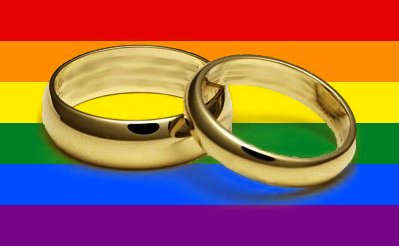California Resident Now Legally Non-Binary

The intersex and non-binary communities had reason to celebrate Monday as Sara Kelly Keenan became the first California resident to change her gender to non-binary.
Keenan, who told NBC OUT that she still prefers feminine pronouns, is the second U.S. citizen to have a legal non-binary gender identity. The first was Jamie Shupe, who successfully petitioned to change their legal gender identity in Oregon in June earlier this year.

Sara Kelly Keenan is one of the roughly one in 2000 people born intersex in the U.S every year. Keenan has Swyer Syndrome, a genetic condition where the person has an X and Y chromosome and female reproductive organs and genitalia, although their ovaries are non-functioning. As a result, many people with Swyer Syndrome are raised female, and undergo hormone therapy as adolescents to induce puberty and menstruation, according to the Genetics Home Reference.
Keenan was diagnosed as a teenager and had surgery to remove gonadal tissue, a decision she says was made by her parents without her full understanding or consent. At 48 years old, Keenan visited an endocrinologist who revealed her condition and “confirmed her suspicions that she was born intersex,” Keenan told NBC.
This is a common narrative for people born intersex, non-binary, or with ambiguous genitalia. Since the 1950s the “optimum gender of rearing” model has been used by doctors and medical professionals. The model advocates – and puts into practice – genital and hormonal modification to meet normative standards for males and females. This is often done without consent on behalf of the patients, and parents are rarely told that there are options other than surgery.
(For more information and narratives on intersex experiences, see the film One in 2000, the Intersex Society of North America, or this special issue of Chrysalis)
Now 55, Keenan describes being inspired by Shupe to apply for a third gender label based on her intersex identity.
“I identify as intersex, both as my medical reality and as my gender identification,” she said. “It never occurred to me that this was an option, because I thought the gender change laws were strictly for transgender people. I decided to try and use the same framework to have a third gender.”
Keenan applied on August 5, and expected to have to defend her petition strongly in court. But Judge Robert B. Atack merely approved her petition; the real battle will be getting the state’s bureaucracy to change Keenan’s license and other documentation. Shupe just received a letter this week from the Oregon DMV on what steps they can take moving forward, but Oregon is a smaller state that tends to be more progressive on controversial issues like assisted suicide and queer rights than California.
For now, Keenan and Shupe are just happy that they can be themselves and that they were able to get the ball rolling for non-binary rights. Five other people working with the Intersex and Genderqueer Recognition Project plan on filing their own petitions in several California cities in the upcoming weeks.










